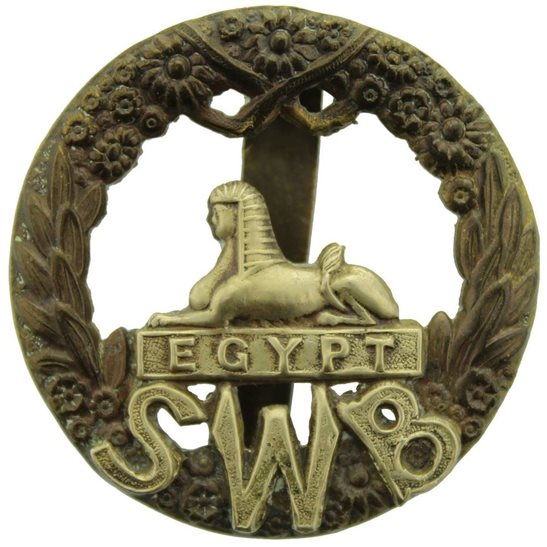Personal Details
Born: 27 July 1886 in Malpas, Cheshire.
Family: He was the son of Rosa Wharton; Rosa subsequently married Thomas Coffin and together they had three children. No marriage can be traced for John.
Residence: In 1891 and 1901 he was living at his grandparents’ house in Well Street, Malpas, Cheshire. In 1911 he was boarding in Smallbrook Road, Whitchurch, Shropshire. The 1919 Absent Voters’ Register has an address of 6 Yardington, Whitchurch for him and in 1939 he was living at 16 George Street, Whitchurch. At the time of his death he lived at 22 Newtown, Whitchurch.
Employment: In 1901 he was a cow boy on a farm; in 1911 he was a carter’s labourer. In 1939 he was a road worker.
Died: In 1940 at the Royal Salop Infirmary, Shrewsbury, aged 54 and was buried on 17 July that year in Whitchurch cemetery.
Military Details
Regiment: South Wales Borderers
Rank: Private
Service Number: 44833
Date of Enlistment: Not known
Date of Discharge: Not known
Reason for Discharge: Not known
John was awarded the Campaign Medals (British War Medal and Victory Medal)

The British War Medal (also known as 'Squeak') was a silver or bronze medal awarded to officers and men of the British and Imperial Forces who either entered a theatre of war or entered service overseas between 5th August 1914 and 11th November 1918 inclusive. This was later extended to services in Russia, Siberia and some other areas in 1919 and 1920. Approximately 6.5 million British War Medals were issued. Approximately 6.4 million of these were the silver versions of this medal. Around 110,000 of a bronze version were issued mainly to Chinese, Maltese and Indian Labour Corps. The front (obv or obverse) of the medal depicts the head of George V. The recipient's service number, rank, name and unit was impressed on the rim.
The Allied Victory Medal (also known as 'Wilfred') was issued by each of the allies. It was decided that each of the allies should each issue their own bronze victory medal with a similar design, similar equivalent wording and identical ribbon. The British medal was designed by W. McMillan. The front depicts a winged classical figure representing victory. Approximately 5.7 million victory medals were issued. Interestingly, eligibility for this medal was more restrictive and not everyone who received the British War Medal ('Squeak') also received the Victory Medal ('Wilfred'). However, in general, all recipients of 'Wilfred' also received 'Squeak' and all recipients of The 1914 Star or The 1914/1915 Star (also known as 'Pip') also received both 'Squeak' and 'Wilfred'. The recipient's service number, rank, name and unit was impressed on the rim.

